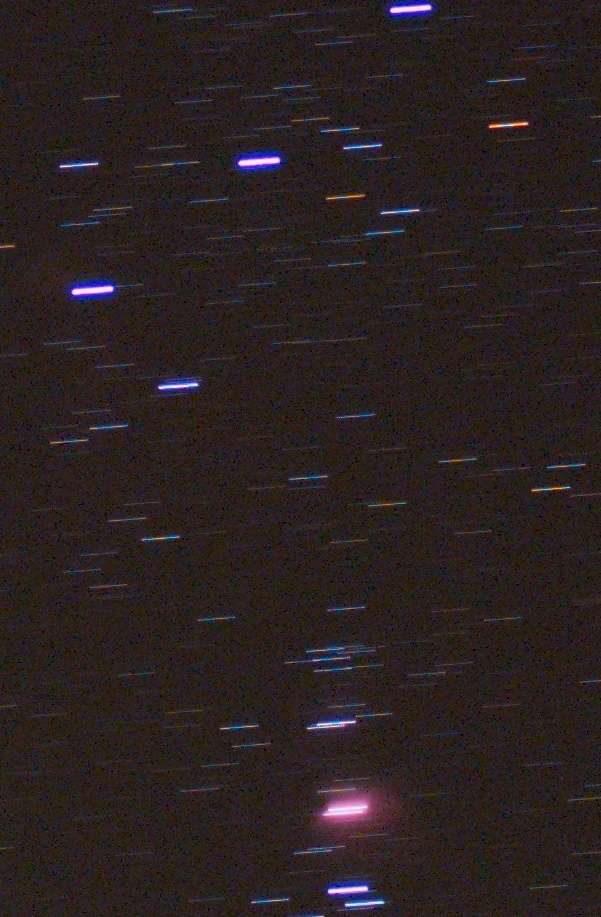Hi Erik,
It is simply colour aliasing, due to imaging a <= 1 pixel wide high-contrast object, onto a sensor without an AA filter.
You should be reassured really: seeing this effect confirms that you are in perfect focus and your lens is really sharp at the f-stop used!
 It is unquestionably NOT due to any sort of aberration
It is unquestionably NOT due to any sort of aberration - chromatic or spherochromatic. Aberrations throw light out of focus, and spread it over multiple pixels.
I would also hesitate to call it a "debayering error". One cannot expect a deBayering algorithm to perform well on incomplete data, which is what we really have here, as I'll explain.
I get this effect also with my 9-micron pixel DB, in the right circumstances. I am glad to show you a sample:

This a 100% crop. No sharpening, no denoising.
ISO 400, 80/1.9 at f2.8, 60 seconds. Central area of Orion, for those who are interested.
This shows that my Mamiya 80/1.9 is already a critically sharp lens at f2.8. As each star image drifted over the sensor, virtually all of its light was focussed into a single pixel in the RGBG Bayer matrix. Most of the motion is horizontally left -> right, so each star spent a good while going R-G-R-G-R-G-R-G-R-G, or B-G-B-G-B-G-B-G-B-G - i.e. its focused PSF was so sharp that it was confined to one row of pixels and it missed one Bayer pixel colour entirely. (With information from the star only being recorded on 2 of the 4 Bayer matrix group pixels, this is why I don't regard it as deBayering "error"..."artefact" would be a fairer term). Hence, it shows as a short trail with either a cyan or a yellow colour bias.
But there is also a slight upward drift as the sky turned, which meant that every so often, the star transitioned from being mainly on RG pixels, to split more equally across RGBG pixels, and then mainly on BG pixels. Thus, each trail alternates between yellow, briefly whiteish, cyan, briefly whiteish, yellow again...
Reprocessing this with moire reduction goes a long way to removing the aliasing. Although to be honest I don't really dislike the effect; it adds interest in my view, emphasising the different underlying colours of the stars, and only looking a bit odd with one's nose up pressed against the print.
There is some longitudinal chromatic aberration present too - the blue halos around the very bright, overexposed stars. Note how the chromatic halos are several pixels wide, and they do not change colour with star drift.
Ray